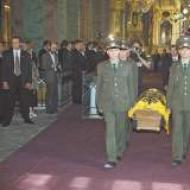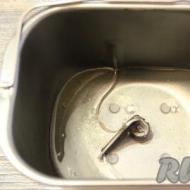
Organization of the technological process and then tr trucks. Maintenance of trucks: frequency, scope of work and general recommendations Frequency of scheduled maintenance
The purpose of this graduation project is the reconstruction of the service station of the enterprise Praktik A LLC, by organizing a TO and TR zone trucks Hyundai HD 65, 72, 78 and Hyundai buses County in such a way that the service station areas are used rationally, so that all technological processes in the maintenance and repair of vehicles are carried out in accordance with the new conditions for the operation of the enterprise. As a result of the technological calculation, the areas that are necessary for the full functioning of the repair zone of Praktik A LLC should be identified due to an increase in the number of rolling stock maintenance posts. Therefore, it is necessary to rationally manage these areas and get the maximum effect from their use.
The enterprise has become official dealer Hyundai in January 2006. At that time it was called Hyundai Verra Motors. In October 2007, the division that sells and services Hyundai brand cars was separated from the large Verra Motors holding. The new car center began to be located in the Kama Valley and became known as Silver Motors LLC. Since July 2008, there has been a separation of powers: the company Silver Motors LLC is engaged in the sale and warranty service of cars, and the internal company Praktik A LLC is engaged in car service.








Introduction 7
1 Business analysis 9
- 1.1 General characteristics of the enterprise 9
- 1.2 Main activities of the enterprise 10
- 1.3 Technical and economic indicators of the enterprise 11
- 1.4 Organizational structure of Praktik A LLC 14
2 Design part 19
- 2.1 Selection of initial data 19
- 2.2.1 Calculation of the annual scope of work of STO 19
- 2.2.2 Distribution of the annual workload 20
- 2.2.3 Calculation of the annual volume of work for self-service service station 21
- 2.2 Annual Scope of Work STO 19
- 2.3 Calculation of the number of production workers 22
- 2.4 Calculation of the number of posts and car spaces 23
- 2.4.1 Calculation of work posts 24
- 2.4.2 Calculation of the car - waiting places 25
- 2.5 Calculation of floor space 25
- 2.5.1 Calculation of the areas of posts of the TO and TR 25 zone
- 2.5.2 Calculation of production areas occupied by equipment 26
- 2.5.3 Calculation of warehouse areas 28
- 2.5.4 The total area of the projected zone TO and TR 29
3 Design part 30
- 3.1 Description of the designed design 30
- 3.2 Structural design calculations 31
- 3.2.1 Wheel selection 31
- 3.2.2 Calculation of the load-bearing elements of the lift for bending strength 32
- 3.2.3 Force calculation of bogie arms 33
- 3.2.4 Verification calculation of the hoist pin for compressive bending strength 36
- 3.2.5 Design calculation of the tie rod pin for bending strength 37
- 3.3 Economic calculation of the cart 39
- 3.3.1 Calculating the cost of manufacturing a trolley 39
- 3.3.2 Calculation of the cost of production of constituent elements 41
4 Project Feasibility Study 43
- 4.1 Basic production assets 43
- 4.2 Calculation planned cost repair work 44
- 4.3 Determination of relative technical and economic indicators 46
- 4.4 Determining the economic viability of a project 47
5 Life safety and environmental safety 50
- 5.1 Life safety 50
- 5.1.1 Analysis of the state of labor protection in Praktik A LLC 50
- 5.1.2 Occupational safety requirements for the repair and maintenance of machinery and equipment 51
- 5.1.3 Organization of work aimed at reducing industrial injuries and general improvement of working conditions 57
- 5.2 Environmental safety at the service station Praktik A 58
Conclusion 66
List of used literature 67
Send your good work in the knowledge base is simple. Use the form below
Students, graduate students, young scientists who use the knowledge base in their studies and work will be very grateful to you.
Similar Documents
Calculation of the annual scope of work, the number of workers and the number of station posts Maintenance. Distribution of annual volumes of work by type and place of execution. Determination of the total number of posts and car seats. Determination of the composition of areas.
term paper, added 06/18/2012
Calculation of the capacity of a car service station. Distribution of annual volumes of work by type and place of execution. Calculation of the number of employees, the number of work posts and the number of car-waiting and storage places. Composition and area of premises.
test, added 02/16/2012
Calculation of the annual volume of work at the car service station, their distribution by type and place of execution. Calculation of the number of workers, the number of posts and car-waiting and storage places. Determination of areas and equipment needs.
term paper, added 01/27/2011
The distribution of the scope of maintenance work and current repair vehicles by type and location. Formation production areas, plots and work posts. Calculation of the number of car-waiting and storage places. Site technology.
term paper, added 05/28/2014
Distribution of annual volumes of work by type and place of execution. Determination of the total number of posts and car-places of the designed service station. The composition and area of the premises. The results of the selection of the main technological equipment for the painting area.
term paper, added 01/31/2015
Determination of the annual scope of work in the service center. Market segmentation. The complexity of maintenance and current repairs cars. Distribution of annual volumes of work by type and place of execution. Calculation of the regular number of workers.
test, added 04/13/2014
Technological calculation of the service station according to body repair cars for 3 working posts. Car service organization system. Distribution of annual volumes of work by type and place of execution. Equipment and number of employees.
term paper, added 12/09/2013
array(44) ( => array(10) ( ["TEXT"]=> string(16) "Company" ["LINK"]=> string(7) "/about/" ["SELECTED"]=> bool (false) ["PERMISSION"]=> string(1) "R" ["ADDITIONAL_LINKS"]=> array(0) ( ) ["ITEM_TYPE"]=> string(1) "D" ["ITEM_INDEX"]= > int(0) ["PARAMS"]=> array(0) ( ) ["DEPTH_LEVEL"]=> int(1) ["IS_PARENT"]=> bool(true) ) => array(10) ( [" TEXT"]=> string(9) "About us" ["LINK"]=> string(6) "/about" ["SELECTED"]=> bool(false) ["PERMISSION"]=> string(1) "R" ["ADDITIONAL_LINKS"]=> array(0) ( ) ["ITEM_TYPE"]=> string(1) "P" ["ITEM_INDEX"]=> int(0) ["PARAMS"]=> array( 1) ( ["rel"]=> string(8) "nofollow" ) ["DEPTH_LEVEL"]=> int(2) ["IS_PARENT"]=> bool(false) ) => array(10) ( [" TEXT"]=> string(12) "Reviews" ["LINK"]=> string(16) "/about/feedback/" ["SELECTED"]=> bool(false) ["PERMISSION"]=> string( 1) "R" ["ADDITIONAL_LINKS"]=> array(0) ( ) ["ITEM_TYPE"]=> string(1) "D" ["ITEM_INDEX"]=> int(1) ["PARAMS"]=> array(0) ( ) ["DEPTH_LEVEL "]=> int(2) ["IS_PARENT"]=> bool(false) ) => array(10) ( ["TEXT"]=> string(27) "We're repairing" ["LINK"]=> string (16) "/my-remontiruem/" ["SELECTED"]=> bool(false) ["PERMISSION"]=> string(1) "R" ["ADDITIONAL_LINKS"]=> array(0) ( ) [" ITEM_TYPE"]=> string(1) "D" ["ITEM_INDEX"]=> int(1) ["PARAMS"]=> array(1) ( ["nolink"]=> string(1) "Y" ) ["DEPTH_LEVEL"]=> int(1) ["IS_PARENT"]=> bool(true) ) => array(10) ( ["TEXT"]=> string(27) "Gazelle Repair" ["LINK"] => string(14) "/remont-gazel/" ["SELECTED"]=> bool(false) ["PERMISSION"]=> string(1) "R" ["ADDITIONAL_LINKS"]=> array(0) ( ) ["ITEM_TYPE"]=> string(1) "D" ["ITEM_INDEX"]=> int(0) ["PARAMS"]=> array(0) ( ) ["DEPTH_LEVEL"]=> int(2) ["IS_PARENT"]=> bool(true) ) => array(10) ( ["TEXT"]=> string(37) "Gazel Diagnostics" ["LINK"]=> string(32) "/remont-gazel /diagnostika-gazel/" ["SELECTED"]=> bool(false) ["PERMISSION"]=> string(1) "R" ["ADDITIONAL_LINKS"]=> array(0) ( ) ["ITEM_ TYPE"]=> string(1) "D" ["ITEM_INDEX"]=> int(0) ["PARAMS"]=> array(0) ( ) ["DEPTH_LEVEL"]=> int(3) ["IS_PARENT "]=> bool(false) ) => array(10) ( ["TEXT"]=> string(44) "Gazelle engine repair" ["LINK"]=> string(28) "/services/remont-dvigatelya /" ["SELECTED"]=> bool(false) ["PERMISSION"]=> string(1) "R" ["ADDITIONAL_LINKS"]=> array(0) ( ) ["ITEM_TYPE"]=> string(1 ) "D" ["ITEM_INDEX"]=> int(1) ["PARAMS"]=> array(0) ( ) ["DEPTH_LEVEL"]=> int(3) ["IS_PARENT"]=> bool(false) ) => array(10) ( ["TEXT"]=> string(44) "Gazelle muffler repair" ["LINK"]=> string(33) "/services/remont-sistemy-vypuska/" ["SELECTED" ]=> bool(false) ["PERMISSION"]=> string(1) "R" ["ADDITIONAL_LINKS"]=> array(0) ( ) ["ITEM_TYPE"]=> string(1) "D" [" ITEM_INDEX"]=> int(2) ["PARAMS"]=> array(0) ( ) ["DEPTH_LEVEL"]=> int(3) ["IS_PARENT"]=> bool(false) ) => array(10 ) ( ["TEXT"]=> string(40) "Repair of running Gazelle" ["LINK"]=> string(35) "/remont-gazel/remont-hodov oj-gazel/" ["SELECTED"]=> bool(false) ["PERMISSION"]=> string(1) "R" ["ADDITIONAL_LINKS"]=> array(0) ( ) ["ITEM_TYPE"]=> string(1) "D" ["ITEM_INDEX"]=> int(3) ["PARAMS"]=> array(0) ( ) ["DEPTH_LEVEL"]=> int(3) ["IS_PARENT"]=> bool (false) ) => array(10) ( ["TEXT"]=> string(32) "Gazelle checkpoint repair" ["LINK"]=> string(21) "/services/remont-kpp/" ["SELECTED "]=> bool(false) ["PERMISSION"]=> string(1) "R" ["ADDITIONAL_LINKS"]=> array(0) ( ) ["ITEM_TYPE"]=> string(1) "D" [ "ITEM_INDEX"]=> int(4) ["PARAMS"]=> array(0) ( ) ["DEPTH_LEVEL"]=> int(3) ["IS_PARENT"]=> bool(false) ) => array( 10) ( ["TEXT"]=> string(35) "Gazelle Tire Service" ["LINK"]=> string(33) "/remont-gazel/shinomontazh-gazel/" ["SELECTED"]=> bool(false ) ["PERMISSION"]=> string(1) "R" ["ADDITIONAL_LINKS"]=> array(0) ( ) ["ITEM_TYPE"]=> string(1) "D" ["ITEM_INDEX"]=> int (5) ["PARAMS"]=> array(0) ( ) ["DEPTH_LEVEL"]=> int(3) ["IS_PARENT"]=> bool(false) ) => array(10) ( ["TEXT"]=> string(39) "Skhod-razval-gazel" ["LINK"]=> string(33) "/remont-gazel/skhod-razval-gazel/" ["SELECTED"]=> bool(false) ["PERMISSION"]=> string(1) "R" ["ADDITIONAL_LINKS"]=> array(0) ( ) ["ITEM_TYPE"]=> string(1) "D" ["ITEM_INDEX"] => int(6) ["PARAMS"]=> array(0) ( ) ["DEPTH_LEVEL"]=> int(3) ["IS_PARENT"]=> bool(false) ) => array(10) ( [ "TEXT"]=> string(60) "Gazelle Maintenance" ["LINK"]=> string(39) "/remont-gazel/tekh-obsluzhivanie-gazel/" ["SELECTED"]=> bool(false) ["PERMISSION"]=> string(1) "R" ["ADDITIONAL_LINKS"]=> array(0) ( ) ["ITEM_TYPE"]=> string(1) "D" ["ITEM_INDEX"]=> int( 7) ["PARAMS"]=> array(0) ( ) ["DEPTH_LEVEL"]=> int(3) ["IS_PARENT"]=> bool(false) ) => array(10) ( ["TEXT"] => string(36) "Remont Gazelle Next" ["LINK"]=> string(20) "/remont-gazel-nekst/" ["SELECTED"]=> bool(false) ["PERMISSION"]=> string (1) "R" ["ADDITIONAL_LINKS"]=> array(0) ( ) ["ITEM_TYPE"]=> str
- Company
- We are repairing
- Gazelle repair
- Repair Gazelle Next
- Repair GAZ Sobol
- UAZ repair
- Services
- Articles
- 26 July 2017
Maintenance of trucks: frequency, scope of work and general recommendations
Every truck needs periodic maintenance. This is a series of procedures, the purpose of which is to ensure the stable operation and high quality of all elements of the vehicle. Regular maintenance is especially necessary for trucks, which are constantly subjected to significant loads. The lack of timely inspection and repair is the main reason for the decline in truck performance. This important event allows you to effectively use the machine, reduce the cost of its operation and repair.
Maintenance of trucks, in comparison with other types of vehicles, has its own characteristics, which every owner should be familiar with. The make, model and manufacturer of the car is not important - maintenance is equally necessary for both domestic and foreign trucks. Below we will talk about the stages and features of maintenance without reference to the type and model of the vehicle.
Regulations for maintenance of trucks
Many car owners do not realize that timing and other aspects of vehicle maintenance do not depend on manufacturers and suppliers. These rules are determined by the regulations of the state standard GOST 21624-81, which is called the “System for the maintenance and repair of automotive equipment. Requirements for operational manufacturability and maintainability of products. This document establishes the timing and frequency of maintenance, contains a list of rules and requirements for the production and repair of automotive equipment.
It is worth noting that automakers also set their own period and procedure for maintenance. However, observations show that the state standard optimally reflects the current state of affairs, and the timing and maintenance rules regulated by it are in many respects similar to the requirements of manufacturers.
Periodicity of scheduled maintenance
The state standard describes three types of car maintenance:
- EO - daily maintenance;
- TO -1 - primary maintenance;
- TO-2 - repeated (second) maintenance.
GOST also contains requirements for the frequency of scheduled maintenance (service interval). It depends on the mileage of the truck and is measured in kilometers traveled. Different kinds Maintenance is required at the following stages of operation:
- Daily maintenance, based on the name, must be carried out once a day;
- The first MOT is carried out after 4000 kilometers traveled;
- The second maintenance occurs when the mileage of the truck reaches 16,000 kilometers.
GOST does not specify the terms of maintenance, which should be carried out during the running-in of the vehicle. These requirements are set by the manufacturer. In most cases, the break-in of trucks is about 1000 kilometers. Many manufacturers recommend replacing engine and transmission oil when this value is reached. Despite the fact that the first maintenance should be performed with a mileage of 4000 kilometers, the procedure can be carried out earlier if the car owner is not sure that the established operating rules are fully observed. This will help preserve the resource of the engine and transmission, the reduction of which leads to significant problems and financial costs during the subsequent use of the vehicle. For greater certainty, it is recommended to carry out part of the maintenance work at a mileage of 1000 to 1500 kilometers.
The GOST does not specify another type of maintenance that takes place on the territory of Russia - seasonal maintenance (SRT). It is performed every six months in early spring and late summer. The purpose of this procedure is to prepare the vehicle for upcoming climate changes associated with the change of season.
There are also exceptions to the general requirements. For example, most modern models freight transport from European and American manufacturers, including Iveco brand cars common in the Russian Federation, are characterized by an extended service interval. It can reach 60,000 kilometers. We are talking about the second maintenance (TO-2), which involves the replacement engine oil. This fact does not contradict the rules of the state standard, since the mileage regulated by it between TO-2 has no upper limit (only the minimum period is indicated).
Large-sized trucks and mainline tractors have a service interval of up to 100,000 kilometers. But it is worth considering that this value is set only for the operation of transport in European countries. In Russia, there are many negative factors that accelerate the wear of the engine and other mechanisms of the car, including poor fuel quality and unacceptable road conditions. If European regulations are followed for the transport described above, then there is a possibility that the truck will fail before it reaches the next maintenance or require significant repair costs.
So with what interval is it more expedient to carry out maintenance of a truck? The answer to this question lies in many factors, but in most cases it depends on age. If a vehicle recently purchased and is still within the warranty period, the procedure must be carried out in accordance with the requirements of the dealer. For cars that have been in operation for a long period, the service interval is determined by the owners themselves. In this case, it is recommended to follow the terms specified by the manufacturer or GOST recommendations.
Approximate scope of work for EO, TO-1, TO-2 and SRT
The list of procedures included in the maintenance depends on the mileage of the car:
- Daily service. During the EO, the vehicle is inspected for the presence of external defects individual elements, the performance of the braking system, the integrity of lighting devices and other mechanisms are tested, the pressure in the tires is determined. Daily maintenance involves washing the car and refueling it if necessary. In other words, the purpose of the SW is to ensure that the freight transport is operational for the current trip.
- First maintenance. TO-1 includes checking the level of motor and gear oil, antifreeze and other fluids in the system. There is an adjustment of various mechanisms of the car - steering, clutch, pedal free play. During the first maintenance, the main components and assemblies are lubricated. Lubrication work is carried out in accordance with the card, which must be kept by the owner of the car or in the service of an official supplier or manufacturer.
- Second maintenance. At TO-2, procedures similar to the previous paragraph and a number of additional measures are performed. First, the engine oil is changed. Often, it is during the second maintenance that some important components are disassembled and repaired, which were only checked and lubricated during TO-1. In most cases, the service interval specified for a particular truck is similar to the period between the second MOT.
- Seasonal maintenance. The list of works included in the service station depends on the season of the procedure. At the beginning of autumn, the truck is prepared for operation in the winter. To do this, antifreeze is poured into the cooling system, and antifreeze liquid is poured into the washer reservoir. In some cases, the engine oil is replaced with a similar one, but with a lower viscosity index. It is mandatory to check and adjust the density of the electrolyte batteries. Before the onset of frost, condensate must be removed from the receivers of the pneumatic system and the dryers must be replaced. At negative temperatures, it is recommended to drain the condensate 1-2 times a week. At the beginning of spring, the list of work on service stations is noticeably smaller, since the requirements for operating conditions in the warm season are lower, and most trucks are perfectly adapted to them.
During the year, the owner of a truck undergoes several types of maintenance. As practice shows, the average value of the annual mileage of cargo vehicles in Russia ranges from 40,000 (with optimal operation) to 250,000 kilometers (with intensive use without downtime). Judging by these data, trucks need to undergo TO-2 2-3 times a year, which entails significant financial costs. But this cannot be avoided - without timely maintenance, the vehicle will quickly run out of service and will need serious and more expensive repairs.
| Content | ||
| Introduction | 6 | |
| 1 | a common part | 8 |
| 1.1 | Characteristics of the rolling stock by brand and mileage | 8 |
| 1.2 | Equipment of the repair base | 9 |
| 1.3 | The existing technological process of maintenance and repair of vehicles | 10 |
| 1.4 | Analysis of the existing maintenance and repair organization | 11 |
| 1.5 | Characteristics of car maintenance | 12 |
| 2 | Settlement part | 14 |
| 2.1 | Selection of initial data | 14 |
| 2.2 | Calculation of the annual maintenance and repair program | 15 |
| 2.2.1 | Correction of the frequency of maintenance and TR | 15 |
| 2.2.2 | Correction of the labor intensity of maintenance and repair | 17 |
| 2.2.3 | Determination of the coefficient of technical readiness | 20 |
| 2.2.4 | Calculation of the annual labor intensity of work on TR | 21 |
| 2.2.5 | Calculation of the annual labor intensity of the electrical workshop | 22 |
| 2.2.6 | Calculation of the number of production workers | 23 |
| 2.3 | Selection of technological equipment | 25 |
| 2.4 | Calculation production area | 26 |
| 3 | Energy part | 27 |
| 3.1 | Calculation of the need for electricity | 27 |
| 3.2 | Heating calculation | 28 |
| 3.3 | Ventilation calculation | 29 |
| 3.4 | Water demand calculation | 30 |
| 4 | Technological part | 31 |
| 4.1 | Organization of maintenance and repair | 31 |
| 4.1.1 | Organization Methods technological process car maintenance | 32 |
| 4.1.2 | The choice of the method of organizing the technological process of car maintenance | 33 |
| 4.1.3 | Organization of labor of workers at the posts of maintenance of cars. Designing the organization of work of workers | 34 |
| 4.1.4 | Organization of labor at the posts of TR vehicles | 36 |
| 4.1.5 | Methods for organizing TR vehicles | 37 |
| 4.1.6 | Organization of repair of components and assemblies removed from vehicles | 38 |
| 4.1.7 | Organization of quality control of maintenance and repair of vehicles | 39 |
| 4.2 | Technological process of work of the site for maintenance and repair of electrical equipment | 40 |
| 4.2.1 | Generator Maintenance | 40 |
| 4.2.2 | Maintenance of the starting system | 40 |
| 4.2.3 | Maintenance of the ignition system | 41 |
| 5 | Economic part | 42 |
| 5.1 | Labor plan | 42 |
| 5.2 | Electrician Payroll Planning | 42 |
| 5.3 | Calculation of deductions for social needs | 44 |
| 5.4 | Cost of spare parts and materials | 44 |
| 5.5 | List of selected equipment | 45 |
| 5.6 | Calculation of depreciation charges | 47 |
| 5.7 | Calculation of costs for services servicing production | 48 |
| 5.7.1 | Calculation of fuel costs for heating | 48 |
| 5.7.2 | Calculation of electricity costs | 48 |
| 5.7.3 | Calculation of the cost of water supply | 49 |
| 5.8 | Plan at cost | 49 |
| 6 | Structural part | 51 |
| 6.1 | Device and principle of operation. Drive end cap assembly tool | 51 |
| 6.2 | Calculation of the strength of parts of the device for assembling covers | 53 |
| 6.2.1 | Calculation of the force acting on the part to be assembled | 53 |
| 6.2.2 | Calculation of the force developed by the pneumatic chamber | 54 |
| 6.3 | Calculation for the strength of a swivel joint | 54 |
| 6.3.1 | Finger check for shear | 54 |
| 6.3.2 | Checking the connection for collapse | 54 |
| 7 | Organization of work on labor protection and fire safety | 56 |
| 8 | Nature Conservation and Environmental Protection | 61 |
| 8.1 | Impact of road transport on the environment | 61 |
| 8.2 | Measures to reduce the harmful effects of vehicles on the environment | 63 |
| List of sources used | 64 |
INTRODUCTION
One of the most important tasks in the field of vehicle fleet operation is the further improvement of the organization of maintenance and current repair of vehicles in order to increase their performance and at the same time reduce operating costs. The relevance of this task is also confirmed by the fact that many times more labor and money are spent on the maintenance of a car than on its production.
Currently based scientific and technological progress the planned preventive maintenance and repair system of the rolling stock of the timber industry complex as a whole, which has been proven by many years of experience, is being further developed.
Both in the field of organization of road transport and in the field of technical operation cars begin to apply various economic and mathematical methods of analysis, planning and design. New methods and tools for diagnosing the technical condition and predicting the resources for the uptime of vehicles are being developed and implemented more and more widely. New types of technological equipment are being created that make it possible to mechanize, and in some cases even automate, labor-intensive operations for the maintenance and repair of rolling stock. Modern forms of production management are being developed, which are designed for the use of electronic computers with a further transition to an automated control system.
With the ever-increasing saturation of the national economy with cars modern system management provides for new structural divisions of road transport - car factories and production associations, repair and maintenance bases, which potentially contribute to the transition to a centralized production of car maintenance and repair.
The most important task in any economy is the organization of maintenance and current repair of cars. This topical topic is the subject of the thesis project.
1 General
1.1 Characteristic mobile composition by make and mileage
Characteristics of the rolling stock available at the enterprise and engaged in the removal of wood (short log trucks), transportation of people and goods is shown in table 1
Table 1 - Characteristics of the rolling stock.
| № | brand car | Type of car | Year release | General mileage, km |
| 1 | GAZ-3307 | cargo | 2004 | 43769 |
| 2 | GAZ-3307 | cargo | 2004 | 60569 |
| 3 | GAZ-3507 | cargo | 2004 | 55069 |
| 4 | GAZ-66 | cargo | 2002 | 81030 |
| 5 | UAZ-3303 | cargo | 1999 | 97517 |
| 6 | UAZ-31514 | passenger car | 2003 | 57099 |
| 7 | MOSKVICH-21412-01 | passenger car | 2001 | 109350 |
| 8 | GAZ-3110 | passenger car | 2003 | 114455 |
Table 1 shows that the rolling stock fleet has a small variety of brands. This, in turn, improves the quality of spare parts and maintenance and repair work.
1.2 Equipment of the repair base
The equipment of the repair base of the enterprise with technologically necessary equipment is shown in Table 2
Table 2 - Technological equipment of the enterprise
1.3 Existing technological process of maintenance and repair
cars
For maintenance of cars in the garage there is an integrated team that performs all types of maintenance and repair. When performing all types of maintenance, the following operations are performed.
Daily Maintenance (EO)
Cleaning the engine from dust and dirt;
External inspection check the absence of leakage of oil, fuel, coolant;
Check the oil level and top up if necessary;
Check the alternator belt tension.
Maintenance No. 1 (TO-1)
At TO-1, SW operations are performed, as well as:
Check the oil level and, if necessary, add it to the level of the control holes in the transmission units;
Check and adjust the devices of the power supply system and electrical equipment.
Maintenance No. 2 (TO-2)
At TO-2, TO-1 operations are performed, as well as:
Rinse the air cleaners;
The sludge is drained from the coarse fuel filter;
Change the oil in the crankcase.
At the service season (CO), a check is made batteries(checking the level and density of the electrolyte), change the oil and fuel corresponding to the upcoming season.
1.4 Analysis of the existing organization of maintenance and repair
















